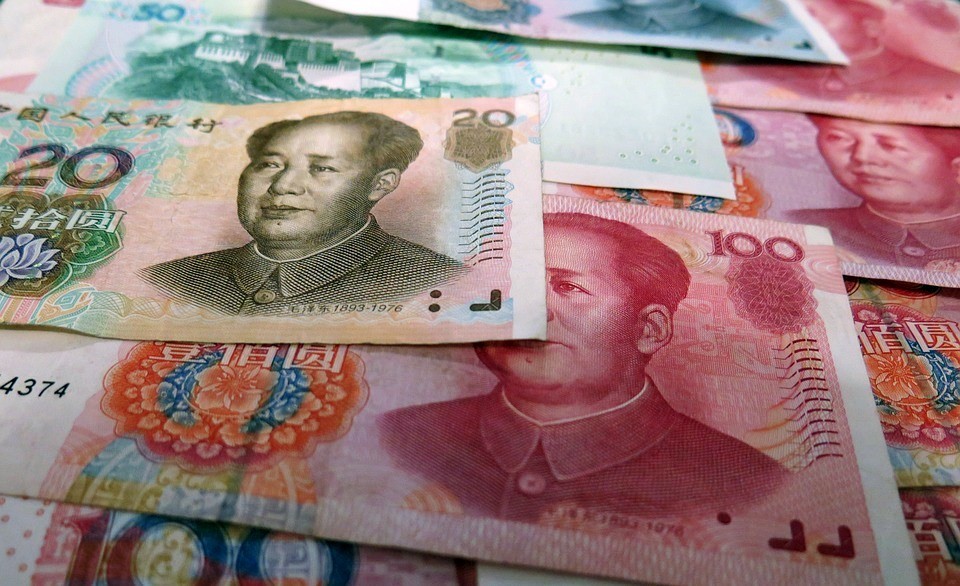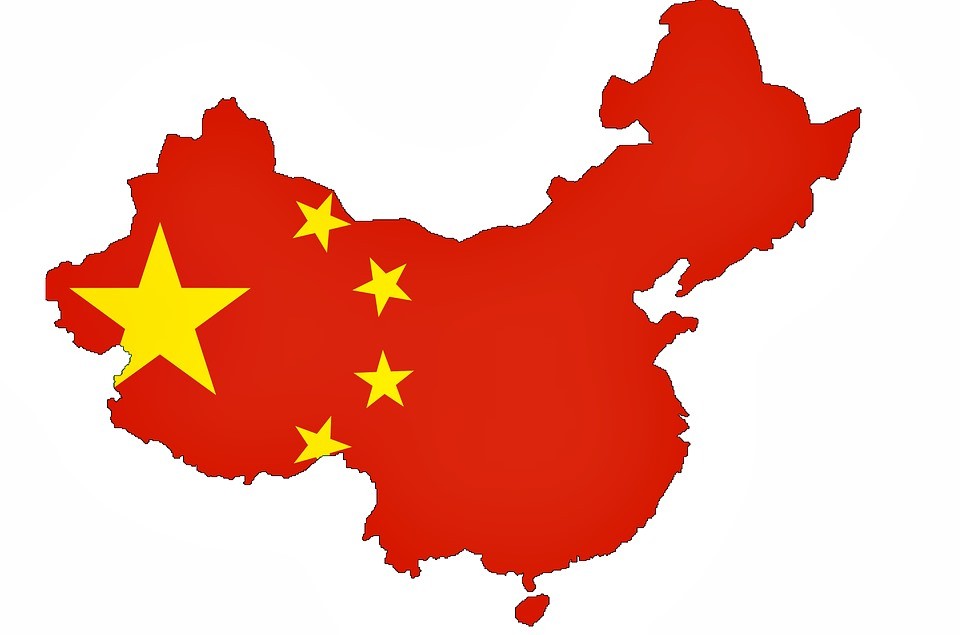Social Media
Top Nine Project Management Trends in 2012 – Just a Heads Up for You

While it's not possible to predict what's going to happen in the future, it's pretty easy to predict the trends in the field of project management. How? Here's the secret. We can forecast the project management trends with a moderate level of confidence based on what has happened in the previous year and based on recent survey results. Let's see that now.
The following trends are the high level summary of the recent trends based on recent management study reports and a few survey reports.
Customer Trends – Middle class people are increasingly making use of the Internet to buy products and services and they expect best of the best in every purchase.
Economics Trends – China's GDP is growing at an average of 9% this year; India's GDP is growing at an average of 7.5% and both the Europe's & US GDP are growing at an average of 3%. Both China and India progress have been noted in this year.
Business Trends – Great business practices are emerging. To name a few, cloud computing and virtualization are gaining momentum. Outsourcing is growing and E-commerce has gone social now. Also, businesses want to sit next to the customer when developing products and services for better feedback.
Social Trends – The number of Social Networking Sites (SNS) have almost doubled since 2008. People all around the world are starting to use social networking sites such as Facebook, LinkedIn, MySpace, and Twitter to share their experience.
Now, let us look at few recent survey results.
The NFIB Research Foundation has collected Small Business Economic Trends data with quarterly surveys since 1974 and monthly surveys since 1986 and found that Sales remain the largest problem for small firms. The BNI Business Index was created by BNI, the world's largest business networking organization. It was created to gauge the economic state of business worldwide based on global survey results of retailers, service companies, and manufacturing companies all around the world. According to the BNI survey participants, 70.4% of the respondents believe that business is growing (58.1%) or growing substantially (12.3%) compared to this time last year. Only 5.4% felt that business was declining (4.6%) or declining substantively (.8%) compared to this time last year.
The Gartner 2011 CIO Survey reveals that almost half of all CIOs expect to operate their applications and infrastructures through cloud technologies within the next five years. The Harvey Nash CIO 2011 Survey result shows that Cyber Security is a growing concern for CIOs. The 2011 IBM Global CIO study results unforgettable that both CEOs and CIOS focuses over the next 5 years are in Insight and Intelligence, Client intimacy, people skills, Risk Management, Enterprise model changes, Industry model changes and Revenue model changes. Also, the survey result reveals that Business intelligence and analytics is of utmost importance as CIOs' top visionary plan to increase competitiveness over the next three to five years.
According to the US Labor Department, 13 of the 20 fastest-growing occupations between 2004 and 2014 are related to health care. Home health aides, medical assistants and physician assistants are in the top five. The 14TH Annual Global CEO survey results show that CEOs plan to shift theirourcing to China, India, Germany and Brazil and want to partner on projects with other firms to be significant on a global scale. Also, the survey reveals that Risk Management is increasingly high on their agenda. Beside, the CEOs think that Cloud computing can enable companies to manage their business processes more efficiently.
A survey by IT staffing company, Robert Half Technology of 1400 CIOs across the United States found that more than half are predicting that real-time collaboration technologies such as Jive and SharePoint will surpass email as the chief form of internal communications in the next 5 years . The 2011 Global Retail CIO Survey results show that the companies prioritize technologies that enable them to get closer to their customers across channels over promotions. The CIO Magazine IT Economic Impact results shows that IT investments remain stable despite the recent events affecting the economic recovery; However, participants are being cautious when making these decisions.
The CIO Tech Poll in July 2011 shows that top areas for investments include cloud computing services (62%), BI & analytics (57%), hardware infrastructure: tablets (55%) and mobile / wireless (54%). The top technologies that are actively being searched are cloud computing services, business process management, desktop PC virtualization and enterprise data management.
The 2011 second quarter Deloitte Chief Financial Officer Survey shows that corporate revenues are likely to slow over the next 12 months. The CFO Survey 2011 3rd quarter results shows that capital & Technology spending will increase; Outsourced employment will increase in all places including Europe, United States, Asia and China. The Association of Government Accountants' Annual CFO Survey by Grant Thornton finds that the Risk Management is getting more attention.
Now, let us try to forecast the trends based on the above mentioned survey results and trends. The 14TH Annual Global CEO survey results show that Risk Management is increasingly high on their agenda. The 2011 IBM Global CIO study shows that one of the key areas the CIOs concentrate more on for next five years is Risk Management. Similar findings reported in CFO survey by Grant Thornton. This shows that greater emphasis on Risk Management will take place in 2012. I'm sure you know how to co-relate survey results with future trends. Let's try to predict one more trend now. If we look at the 14th Annual Global CEO survey results, the CEOs plan to shift theirourcing to China, India, Germany and Brazil and it is similar to the CFO Survey finding. If that is true, as a project manager you will be managing more virtual multi-cultural teams in 2012. In this way, one can predict future trends of management. Based on the survey results, I would think that the following project management trends would take place in 2012:
Curb on "nice to have" requirements and processes
Cloud will be seen more
Great emphasis on supplier Management
Managing more virtual multi-cultural teams
More utilization of collaboration tools
Greater emphasis on leadership and good people management practices
Greater emphasis on Risk Management
Greater emphasis Client Management
More use of free-ware, open source software and collaboration tools
Predicting the future is not an easy task because it has a lot of complex uninteresty components and these predictions are based on what happened in the previous year and recent survey results.
If you think I have missed out on any trends which you think might happen in 2012, please share your views.
Social Media
The Phantom Growth of China's Ghost Cities

Bloomberg has a new video series out called "China's Ghost Cities."
The reporter, Adam Johnson, describes how the Chinese government is building massive cities that no one lives in yet. The expectation is that China is going to "grow" into these cities.
A remarkable idea, really. The authoritarian planners in Beijing or where decide it would be good if, say, a million people or more could relocate to a pre-planned area.
Then they build out the infrastructure – or rather the entire metropolis, skyscrapers, stops and all – and wait.
Stop for a moment and ponder how nutty this is. The last time your editor checked, central planning was not a huge success. According to history, bureaucrats wielding directives over long distances tend to allocate resources poorly.
But are ghost cities a recipe for a bust? Some say no. The Bloomberg reporter, for instance, assures us that China's economies are different – that is to say, "it's different this time." (Where have we heard that before …)
It is supposedly OK that these ghost cities, built for millions of refugees, have only tens of thousands of people living in them – because all that deserted square footage will eventually be put to good use.
As a bonus, building ghost cities is great for economic growth.
Via running superhighways out to the middle of nowhere, erecting steel and glass towers in the boondocks, China generates new jobs in construction, civil engineering, city planning and the like. All this construction looks fabulous on paper. The ghostly infrastructure gets counted as productive output, and the super-aggressive GDP target is maintained.
But what is wrong with that picture?
For one, there is the central planning problem. Growth and development are free market forces, with signature marks of trial and error. Successful cities are built from the ground up, not decreed by bureaucrat stamp. So how does the government know where a new metropolis should go, or what its optimal size should be?
Then you have the accounting problems. Should the promise of tomorrow be so read reflected on balance sheets today?
Imagine if a public corporation said, "We are going to grow 20% per year by building idle factories in the middle of nowhere, that no one is going to use for quite some time. will show up. We'll make a profit on them ever. Just do not ask when. "
Such a plan would be brutalized by the market, because public companies are held accountable for profits and return on investment (ROI). (At least most of the time – in bubble times investors will happily suspend their rational faculties.)
The Chinese government, of course, does not have to seek profit in its actions. Or it can measure results in some entirely non-traditional way, via "how many jobs did we create" or "how do the GDP numbers look."
At the end of the day, the "ghost city" mandate is directly channeling John Maynard Keynes, who once suggested digging holes, then filling them up again as a way to put men to work.
China is being more sophisticated. Rather than digging holes, it is putting up buildings. The effect is the same though. "Some day" the empty skyscrapers will have value – if they are not condemned as worn-out structures first – but until then they are just holes.
China bulls are not bothered by the ghost cities for at least three reasons.
First, they have convinced themselves (with more than a bit of faith) that the empty metropoli will one day (sooner rather than later) be full.
Second, they figure China has a lot of money to burn even if the ghost cities do not work out.
And third, as the old saying goes, "a rolling loan growers no loss." As long as the specialized music is playing, the property developers can keep dancing.
The trouble, as always, comes when the music stops. If China turns out to have built, say, 20 years of excess capacity by the time that happens, then hundreds of billions' worth of stagnant projects will have to be written off.
Tougher still is the idea that China's "economic miracle" is actually a heavily leveraged bet on mercantilism … propped up by runaway construction … with the tail end of the boom pushed recklessly from pie-in-the-sky projections for future growth.
That is another favorite tactic of investment manias: Along with the empire of forever skyward growth curves, mortgaging tomorrow (and borrowing against it) for the sake of today.
Even if China can write checks to cover the write-off costs of all those cities, there is a big multiple built in to the global economy right now on the assumption that China growth is the real deal. When it sinks in that much of growth is actually "ghost" or "phantom" growth – in keeping with these empty monuments to now – the collapse of that multiple could hurt.
Social Media
The Chinese Water Lantern Festival

The Chinese have designed and crafted lanterns that can float in water and glide in the air. Though sky lanterns were initially crafted as a device, to send signals, today they are used as decorative articles. Water Lanterns in Chinese festivals have its own importance.
There is an interesting story to the History of Chinese lanterns. It was believed that these lanterns, both the sky lanterns and the Water lanterns used in Chinese festivals were initially created out of necessity rather than artifacts for decorations. The Chinese have a history of inventing several new things and also leading the way in several new technologies. But, initially, the Chinese did not have access to or the knowhow to make a vital building material – Glass. Hence they did not have glass lanterns or glass windows. On the other hand, they had the skill of making paper. The paper industry in china was so advanced that it could produce paper that was very thin, to let light pass through it. They could also add beautiful colors and embellishments to the paper. Thus was born, the world’s first source of portable light – the lantern.
These lanterns were then gradually adapted to float in water and glide in the sky. Such was the skill of the Chinese craftsmen that these lanterns were used for lighting public places, homes and even battlefields. There is a story of a military strategist Zhuge Liang, having used paper lanterns to help the army march by night and attack by the day.
Over time, this battlefield beacon turned into an epitome of hope and wellbeing and festivity. The origin of the Lantern festival can be dated back to the Han Dynasty. During this time, the city is decorated with lanterns that are beautifully crafted in different shapes and sizes and then displayed with wishes or riddles written on them.
Water lanterns in Chinese festivals like the Moon Festival are a major tourist attraction. People from all over the world come to witness this event. On this day children and adults make or buy Water lanterns and write wishes on them. They then set these lanterns afloat in the water under the moonlight and watch them float away.
Water Lanterns in Chinese Festivals alongside other lanterns are used to light up the way to guide the spirit of their ancestors to come and bless them. Even today this tradition is followed, and people decorate their homes and public places to welcome their ancestors.
Health
Keemun Black Tea From China – Caffeine Content, Health Benefits, And Other Properties

Keemun is a type of Chinese black tea, originating in Qimen county of Anhui Province, China. This article gives an overview of the caffeine content, health benefits, and other properties of Keemun.
Keemun is primarily produced in Anhui province, but teas in this style have also begun to be produced in nearby Hubei, as well as in Jiangxi, and even in Taiwan. Keemun is usually described as having an earthy aroma, and its overall character is quite different from Indian and Ceylon teas. My personal perspective is that Keemun has a richer, warmer quality, often reminiscent of dried fruit, and in higher grades, a pleasing hint of wood or wood smoke. These teas are rich and full-bodied, and are among my favorite black teas.
Caffeine content:
Although you may be looking for more concrete information, it is hard to generalize about the caffeine content of Keemun. Even though it originates primarily in one region and shares certain aspects of production, Keemun is fairly diverse, coming in different grades. As a general rule though, Keemun is often in the moderate to high end of caffeine content, among teas, which means that it still has considerably less caffeine than a typical cup of coffee. Keemun has historically been used in breakfast blends, where strongly caffeinated teas were desired
Health benefits:
Keemun has actually been the subject of direct scientific study., in association with weight loss in animal studies. There is only a small amount of research referring specifically to this variety of tea, however, so most of what can be said about Keemun must be inferred from general studies about black tea.
Although green tea has a stronger association with supposed “health benefits” in the public consciousness in the United States, this association may be skewed by historical factors. Much of the early research on tea and health was conducted in Japan, where tea is synonymous with green tea. Subsequent research has found substantial evidence that black tea is healthy as well. In the absence of more reserach specifically looking at Keemun, it seems reasonable to conclude that Keemun is likely to have a similar amonut of health benefits to black tea.
Locating high-quality Keemun:
My recommendation, if you want to buy the best Keemun, is to buy exclusively loose-leaf. My experience is that the best Keemun is usually sold by companies that specialize in Chinese tea. Because they store relatively well, Chinese black teas, even those of considerably high quality, tend to be relatively inexpensive, with all but the highest grades (Keemun Hao Ya A and B, and Keemun Mao Feng) costing well under $10 for about 1/4 pound or about 100-125 grams. A few companies, including Rishi Tea, Arbor Teas, and Little Red Cup, sell fair trade certified Keemun, produced in Hubei, Anhui, and Jiangxi provinces, respectively.












